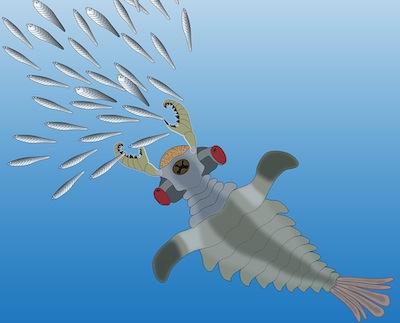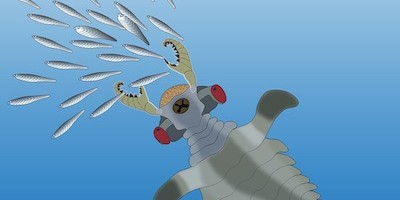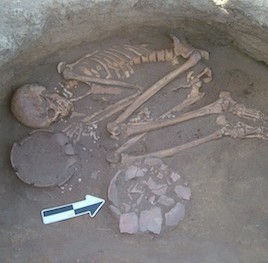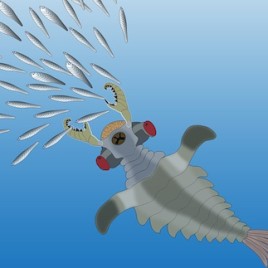
Artist’s impression of Lyararapax, one of the species of the world’s first predators, the anomalocaridids, chasing its possible prey, primitive fishes that also existed in the Lower Cambrian. Image credit: Nicholas Strausfeld/University of Arizona
New, well-preserved fossils from China suggest that an ancient sea predator may share nervous system features with its modern descendants. Anomalocaridids are creatures from the Cambrian era – over 500 million years ago – first described from fossils found in the Burgess Shale, in British Columbia’s Yoho National Park.
The new fossils from China describe a new species of anomalocaridid called Lyrarapax unquispinus that is so well-preserved its nervous system is visible. Connections between the brain and claw-like front appendages resemble those that enable modern insects, shrimps, and lobsters to control their mouth parts and antennae.
Original research paper published in the journal Nature on July 16, 2014.
Names and affiliations of selected authors



